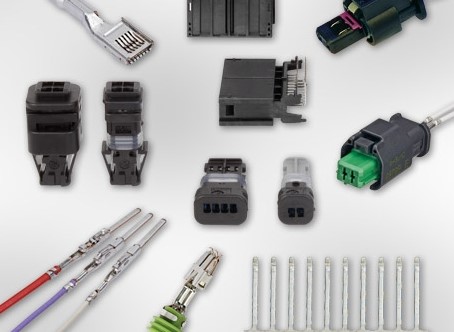Electrical connections that are exposed to different outdoor temperatures consistently will eventually become corroded. This can be avoided by using a cleaner when needed and/or during regular maintenance checks, as this improves electrical connections as well as how they perform. Continue below for the steps to learn how to clean the electrical contacts.
Warning: Before starting, make sure the negative and positive cables are disconnected.
Items You Will Need:
- Wrench
- Clean rag and abrasive rag/emery cloth
- Fine sandpaper
- Toothbrush
- Electrical contact cleaner
- Vinegar
- Electrical contact lubricant
- 1/16-inch (or smaller) diameter steel brush
OPTION 1: Using a Cleaner and Vinegar
- Turn the engine OFF and remove the key.
- Set your Brake (Optional but safe).
- Use a wrench to disconnect the negative battery cable.
- Remove ALL dirt and debris by using the abrasive rag/ emery rag or metal brush to wipe the connector clean.
- Pull the connector apart to get to the female socket and the male probes or the pins.
- Check the male pins carefully (A green or whitish powder on the pins indicates a corrosion issue). You can clear corrosion by dipping the pins in vinegar or spraying it with a cleaner, then brushing the surface with the toothbrush.
- If there is rust or broken metal, the entire plug assembly may possibly need replacing (If this is the case, check the wires for migrating corrosion within the copper strands, as corrosion will make a soldered connection super difficult to hold).
- Also, if corrosion migrates the entire length of the wire, the entire wire may need to be replaced.
- Use a small piece of fine sandpaper (one inch wide by two inches long) to rub the pin to remove all of the discolorations. If done properly, the pin will end up shiny.
- Next, brush each metal pin with the toothbrush to remove the sand.
- Spray the electrical contact cleaner to remove any leftover dry dust or corrosion (If you do not have contact cleaner, you can use vinegar).
- Use the toothbrush once more to remove any leftover debris.
- Spray a coating of the Electrical Grease/Contact Lubricant. (This will help to keep the corrosion away whilst increasing the conductivity of the connector.
Female Connectors
- Spray the Electrical Cleaner into the female socket (Use vinegar if you do not have a cleaner).
- Insert a small steel brush into the socket and rotate it in a clockwise direction several times.
- After rotating the brush, quickly pull it out of the socket (This removes any debris left in the orifice).
- For cleaning each individual pin socket follow the steps above (Be sure to keep the sockets wet with the cleaner or vinegar as you clean them; Just dip the brush in vinegar or spray the cleaner every time you clean a socket hole).
- Spray a generous amount, one to two seconds of pressing the spray button, of the contact electrical grease/ lubricant into the socket.
- Then reassemble the connector.
You are ALL SET!
OPTION 2: Using a Cleaner Only
- Turn the engine OFF and remove the key.
- Set your Brake (Optional but Safe).
- Turn Off the power supply (By disconnecting the battery cable).
- Remove corrosion or oxide formations with a metal brush or abrasive cloth/emery cloth.
- Spray a small amount of cleaner on/ in all areas that need cleaning (Plastic and metal parts). Such as:
- Spark plugs
- Tool battery connections
- Circuit breakers
- Relay switches
- Thermostats
- Light Sockets
- Power receptacles
- Allow the spray to dry thoroughly (this can happen quickly depending on the cleaner; Check the directions on the can for drying time).
- Lastly, to seal and protect all of the contacts from corrosion while also preventing contacts from contaminating and bonding together, use an electric grease of your choice, as there are many brands to choose from.
FAQS
What happens if your electrical contacts are dirty?
It’s important to know that corrosion build-up in contacts leads to the following:
- Disrupts the flow of electricity
- Contact Failure
- Engine Malfunction
- Contacts sticking or welding together
- Contacts overheating and shorting out
- Overall renders poor performance
What other options are there for cleaning electrical contacts?
- Baking Soda: Place baking soda on the terminals. Add water till it fizzes. Use a scrub or micro brush to clean connections and posts. Rinse the area with distilled water. Dry with a towel.
- Compressed Air: Blow the compressed air on the dirty area and clean any loose debris.
- Rubbing Alcohol: Pour rubbing alcohol on the dirty area and wipe it clean.
- Sandpaper & Rubbing Alcohol: Scrub away the dirt, brush off any debris, and rub it clean with rubbing alcohol.
- WD-40: Use the WD-40 nozzle to spray into hard-to-reach areas.




